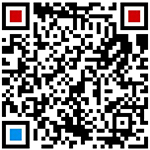The development trend of industrial design is as follows:
Technological innovation and application
AI and multi-modal interaction and integration: Multi-functional products evolve from single function superposition to intelligent co-evolution, and realize functional self-adaptation through AI algorithms. For example, smart blenders can use sensors to identify ingredients and automatically switch modes to generate nutritional analysis reports.
Edge computing and IoT collaboration: The modular design combines edge computing technology to enable dynamic expansion of product functions. For example, Samsung's Folio tablet can be linked to smart home devices through IoT protocols.
Digital Twin and Virtual Verification: Digital twins and VR technologies can be used to significantly shorten the design verification cycle, such as BMW iFACTORY, which reduced the design verification cycle from 6 months to 72 hours through virtual production line simulation.
Material innovation and form breakthrough
Eco-friendly materials and structural restructuring: Bio-based materials (e.g. mycelium, algae-based polymers) drive product sustainability. For example, the PulpaTronics tag developed by the Royal College of Art in London uses laser-engraved carbon-based circuitry to replace traditional RFID chips, reducing carbon emissions by 70%.
Flexible electronics and miniaturization technology: breakthroughs have been made in the field of wearable devices, such as smart hangers integrating multiple functions and relying on flexible circuit boards to achieve ultra-thin form; Medical-grade testing equipment condenses a variety of detection functions into the form of a ring through nano-coating technology.
The design concept has been upgraded
Ergonomics and scenario-based design: Ergonomic design shifts from static optimization to dynamic response, focusing on invisible complexity management. For example, the children's suitcase adopts an 8° forward-leaning seat and a golden triangle load-bearing structure, taking into account the needs of carrying items and children's rest; The MUJI Home Collection combines multiple functions into a minimalist look with hidden interfaces and color simplification.
Sustainability & Circular Economy Practices: Products are designed from the earliest stages of their design with repair, upcycling and recycling paths in mind. For example, the biodegradable battery module developed by LG Chem supports the independent replacement of functional components of smart devices, reducing material waste by 92% compared with the traditional end-of-life mode.
Cross-border integration and business model reconstruction
Multidisciplinary integration: The interdisciplinary cooperation between industrial design and engineering, art, social sciences and other disciplines will be further strengthened. For example, a collaboration with material scientists to optimize the durability of self-healing coatings and a panel of psychologists was invited to refine the logic of emotional interactions.
AI-driven personalized manufacturing: 3D printing technology combined with user biodata enables rapid prototyping of customized and multifunctional products. The CNC machine tool designed by Ruqin Weijing uses AI algorithms to control the machining accuracy error at ±0.01mm, and at the same time supports personalized engraving of appearance texture.
Sharing economy model innovation: Magnetic modular furniture supports rapid disassembly and reorganization in rental scenarios through standardized interfaces. Industrial testing equipment uses detachable sensor modules, and enterprises can dynamically upgrade hardware performance through cloud subscription function packages, reducing initial procurement costs.
Changes in market and user needs
Focus on user experience and personalized customization: The user-centered design concept is more in-depth, not only focusing on the appearance of the product, but also focusing on the product experience, meeting the personalized needs of different users, and providing customized products and services.
Emphasizing the integration of differentiation and marketing: customers pursue differentiation, product design is no longer obsessed with copying popular models, and requires marketing selling points when designing, integrating marketing and product design, and creating a unique product image and brand characteristics.
 Precision Design
Precision Design with us:15302653652
with us:15302653652

